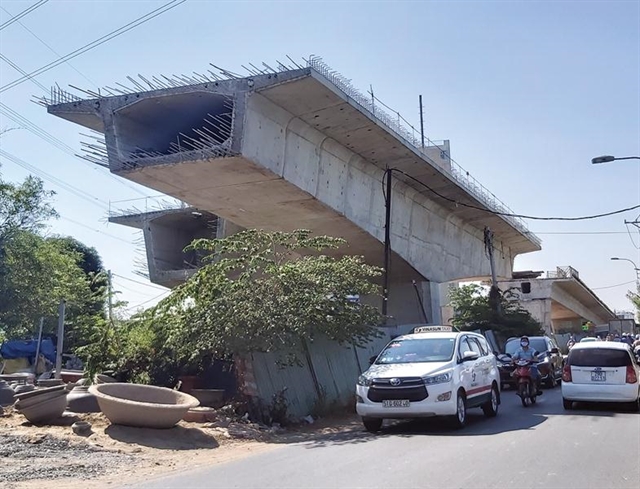 Society
Society

Construction on many traffic infrastructure projects is running behind schedule due to an inefficient land clearance process.

|
| Many traffic infrastructure projects in HCM City are behind schedule because of land clearance and resettlement problems. — Photo courtesy of baodautu.vn |
HCM CITY — Construction on many traffic infrastructure projects is running behind schedule due to a slow land clearance process.
The HCM City Management Board for Traffic Works Construction and Investment has requested an urgent meeting with the HCM City People’s Committee to discuss challenges with delayed projects.
Various traffic infrastructure construction works in the city have begun but have been delayed due to land clearance problems, the management board stated.
This has negatively affected the quality of life of locals living in the project area.
According to Đầu Tư (Investment) newspaper, HCM City currently has about 60 projects that are behind schedule due to land clearance.
Five of them are under a “red alert” status.
Specifically, the Long Kiểng Bridge Construction Project, though approved by the city People’s Committee nearly 20 years ago, has only completed 52.6 per cent of the construction volume due to delays in land clearance.
Last month, Nhà Bè District People’s Committee proposed purchasing 53 land lots to arrange resettlement for locals living in the land clearance area. The proposal is currently awaiting authorities’ approval.
Nam Lý Bridge Project, worth VNĐ857 billion (US$37.2 million), encountered a similar circumstance. According to the initial plan three years ago, this project was supposed to be completed after one and a half years. However, only 39 per cent of the project, worth VNĐ162 billion, has been completed.
The project investor is seeking the final land compensation unit price from the HCM City Land Valuation Council so that District 9 People’s Committee has a basis to carry out land compensation and then hand over the land plot to the investor.
Meanwhile, the Tăng Long Bridge Project has had 30 per cent of its construction volume completed. This project has been halted for a year because 42 households have not settled on the land compensation price.
Similar cases include the Xóm Củi Bridge’s embankment project and Gia Định Park’s renovation project. Even though the Gia Định Park project has had 95 per cent of its volume completed, 12 households and one organisation have not handed their land over.
Administration hurdles
Problems related to land clearance are partly caused by ineffective coordination in resolving administrative procedures between consulting agencies, project management boards, and district-level people’s committees.
Local residents' disagreement about land compensation prices has also contributed to the problem.
According to a representative of the HCM City Management Board for Traffic Works Construction and Investment, land clearance and compensation is the biggest obstacle when it comes to implementing traffic infrastructure projects.
“Compensation for site clearance usually makes up two thirds of the total investment of the project. However, disagreement on compensation rates between the state authorities and locals remains the biggest problem," the representative said.
In the time to come, the representative expects more proactive measures taken by HCM City authorities now that the Government has approved shortening the processing time for land compensation, resettlement and acquisition in the city.
A leader from a district-level People’s Committee said that land clearance is a very difficult task, especially when market land prices fluctuate rapidly and the process of setting up compensation plans and approving compensation prices is complicated.
As such, it is important to make fundamental changes in how land compensation and site clearance are carried out.
Recently, the HCM City People’s Committee assigned the Department of Natural Resources and Environment to be responsible for the implementation of land compensation and resettlement.
The department will also be in charge of issuing a coordination regulation among relevant authorities to ensure transparency, shorten the process of site clearance and compensation, and remove the administrative "knots". — VNS




